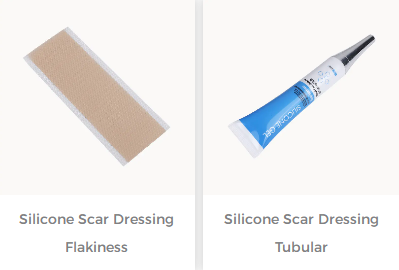The dermis is the core part of the skin, composed of layers of cells and collagen fibers that provide the skin's elasticity and strength. Dermal lesions usually refer to abnormal changes in dermal tissue, including primary and secondary lesions. Proper identification of these lesions is important as they may require different treatments, so follow along with me.
Primary dermal lesions:
Primary dermal lesions are lesions that develop within the dermis and are usually autoimmune diseases. Primary lesions may be present from birth (ie, birthmarks) or develop later in life (ie, moles). This lesion may cause damage to the skin and tissue, and the formation of unusual bumps, nodules, and sores on the skin. The primary lesion is distinct from the surrounding skin and is easily identifiable. The following definitions fall under the primary lesion category:
Vesicles: Fluid-filled blisters, less than 5 mm in diameter, raised above skin level with well-defined borders
Spots: red, brown, tan, or white in color, well-defined and flat
Pustules: Pustules are similar in appearance to blisters or bullae but contain purulent material
Nodules: Nodules are firm to the touch, raised and easily palpable, and may involve all skin layers
Plaques: Plaques are raised, irregular, firm, flat, and rough; they may gather in one area to form a plaque.
Telangiectasia: small dilated blood vessels that appear near the surface of the skin; may appear as spokes and wheels, or may look like a spider with several "legs" spreading out from a center.
The exact cause of primary dermal lesions is unknown, but it is believed to be related to a dysregulation of the immune system. This lesion may cause immune cells to attack the dermal tissue, resulting in skin and tissue damage.
Secondary lesions:
Secondary dermal lesions are skin reactions caused by other lesions, such as infection, trauma, radiation exposure, and chemical exposure. These responses typically manifest as inflammation and fibrosis of the dermal tissue. Common secondary dermal lesions include infectious lesions (such as boils, carbuncles, carbuncles, etc.), non-infectious inflammations (such as autoimmune inflammation and occupational dermatitis, etc.), and post-traumatic reactions (such as delayed wound healing after surgery and radiation exposure). dermatitis, etc.). Secondary dermal lesions refer to dermal lesions caused by other diseases or factors rather than primary dermal lesions. Secondary dermal lesions generally fall into the following categories:
Scab: Contains dried blood, serum, or exudate, slightly above skin level, may cover skin areas of varying sizes (may be very large or very small)
Scales: growths of keratinocytes one after the other, maybe in sheets and are easily removed; irregular in size, dry or oily, thin or thick; may be white or cream
Scratches: scratches that may break the skin, usually linear, caused by nails
Lichenification: Occurs when the epidermis thickens and roughens from prolonged scratching or rubbing of the skin
Atrophy: Occurs when the skin becomes thin and fragile; often occurs in older adults and those who have used topical steroids for a long time
Scarring: occurs when normal skin is replaced by discolored and fibrous scar tissue
Ulcers: Ulcers may involve the uppermost layer of skin (epidermis) or extend down to the dermis; can occur acutely or chronically
It should be noted that the treatment methods and prognosis may be different between different types of secondary dermal lesions, so specific diagnosis and treatment are required by doctors.
Treatment of skin lesions:
Primary dermatosis: Lesions are usually caused by infection, autoimmune disease, or chemicals. Treatment depends on the cause but usually includes medication, surgical resection, or radiation therapy. For primary dermal lesions caused by infection, treatment usually includes antibiotics or other antiviral drugs. Primary dermal lesions due to autoimmune diseases often require immunosuppressive agents such as glucocorticoids or antimetabolites. Chemically induced dermal lesions may require chemical disengagement.
Secondary dermal lesions: Usually caused by primary dermal lesions or other skin diseases. Treatment depends on the type and severity of secondary dermal lesions. For example, for secondary dermal lesions caused by autoimmune diseases such as lupus erythematosus, treatment includes the use of immunosuppressants and surgical removal of the affected area. For secondary dermal lesions arising from malignancies such as skin cancers, treatment usually consists of surgical excision, radiation therapy, or chemotherapy.
For secondary dermal lesions caused by infection, treatment usually includes antibiotics or other antiviral drugs. Secondary dermal lesions caused by chemicals may require chemical disengagement.
In conclusion, the treatment of dermal lesions requires individualized treatment according to etiology and lesion type. Treatment may include medication, surgical resection, radiation therapy, or immunotherapy, among others.
For more information on Innomed® Silicone Scar Dressing, refer to the previous articles. If you have customized needs, you are welcome to contact us; we will serve you wholeheartedly. At Longterm Medical, we transform this data by innovating and developing products that make life easier for those who need loving care.
Editor: kiki Jia
Date: April 19, 2023

 English
English عربى
عربى Español
Español русский
русский 中文简体
中文简体








